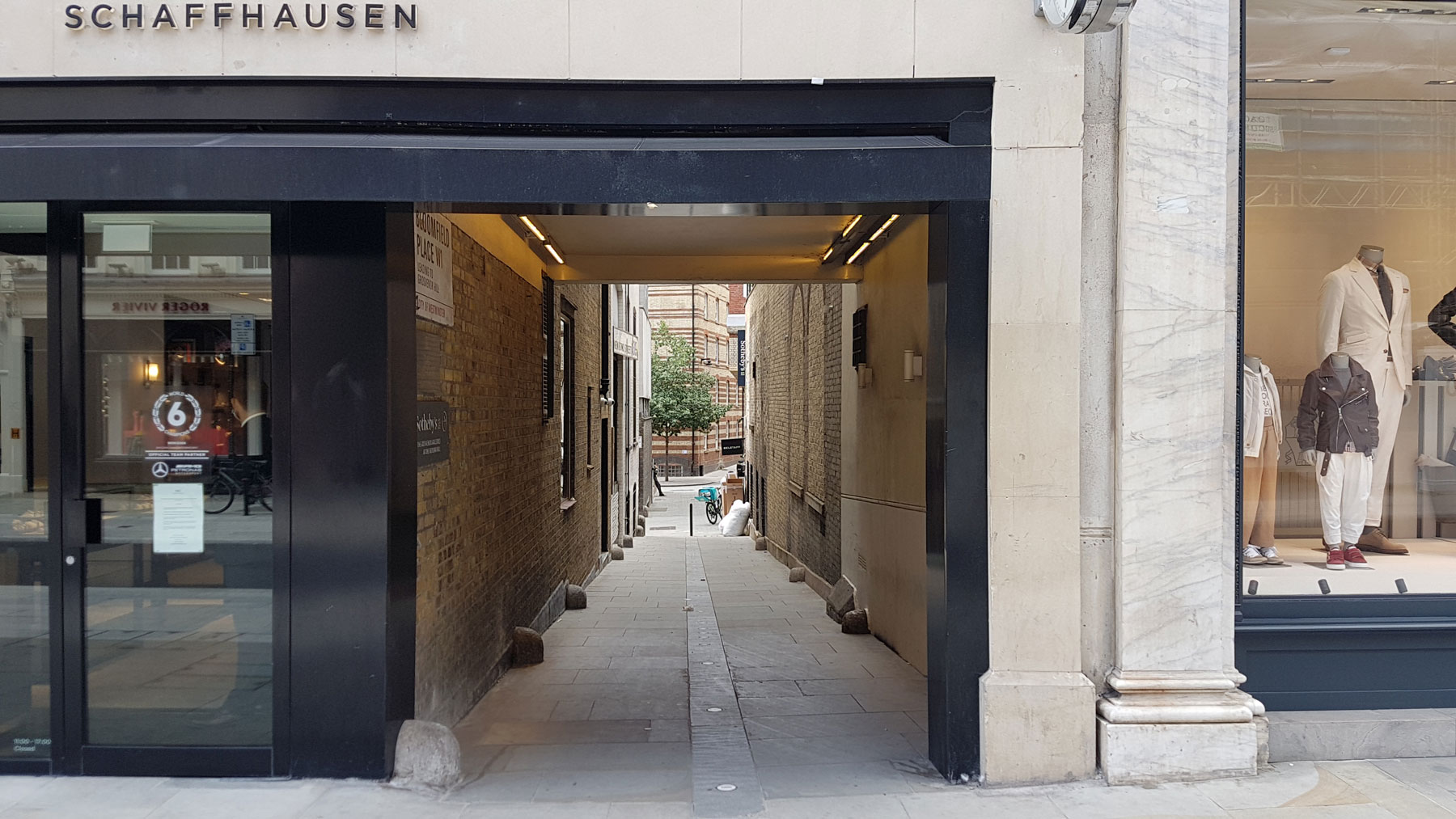A short clean alley that’s notable for the being the site of one of London’s earliest electricity supplies, for the Grosvenor Gallery, and the substation site is still in use today.
This alley, and New Bond Street that it leads off, were developed on fields surrounding Clarendon House on Piccadilly, which was developed by Sir Thomas Bond in the 1720s. The alley first shows up on maps as an unnamed passage behind the rows of smaller houses then fronting onto New Bond Street in the late 18th century – although it probably originates from the first development due to the layout of the roads behind.
The entrance to the passageway has been covered over from very early on in its history and leads to a wide-open space. It’s been modernised in places, but bits of heritage remain — such as the stones in the floor to stop cartwheels damaging the walls.
At the bottom of the alley can also be found the remains of a significant building. The remnants of a hoist stuck of the wall might suggest some level of antiquity, for this is the Aeolian Hall — which in turn replaced the even older Grosvenor Gallery.
The Grosvenor Gallery was created in 1876 by Sir Coutts Lindsay, who bought up three houses on New Bond Street, owned by the City of London, and stables behind to build a large art gallery space.
A grand frontage that was as dramatic then as it’s rather overlooked today replaced the old houses, and behind that was the large picture gallery, and one of the earliest to be lit by electricity.
A negative review by John Ruskin of exhibits by James McNeill Whistler led to Whistler suing Ruskin for libel, winning a farthing in compensation. This case was satirised in Gilbert and Sullivan’s Patience, with the line, “greenery-yallery, Grosvenor Gallery”.
The gallery struggled commercially and was taken over in 1890 by the Grosvenor Club. They, in turn, sold up in 1903 to Orchestrelle Company of New York who converted it into the Aeolian Hall to sell their mechanical pianos, the pianola, along with a concert hall to show off the machine’s performances.
During WWII the Hall was used by the BBC for concerts and recordings, but by the late 1970s it was unoccupied. Refurbished in 1981, it became auction rooms for Sotheby’s which explains their sign on the side building next to the Hall.
They recently renamed it back to The Grosvenor Galleries.
Another relic of the past is a side courtyard space which is still lined with cobbles/setts and backs onto the surrounding shops and flats.
One side is an electricity substation — and a relic of that early supply of electricity to the gallery. While the gallery wasn’t much of a success for its founder, he found himself selling surplus electricity to local shops, and that business flourished. In 1887 it was merged with Sir Coutts Lindsay’s other electricity company, the London Electric Supply Corp, and while they moved the generator station to Deptford, they kept the site in Bloomfield Place as a substation, and it’s still in use today.
So down this alley, in an anonymous brick building is a piece of London’s early electricity history, and still in use 135 years later.










